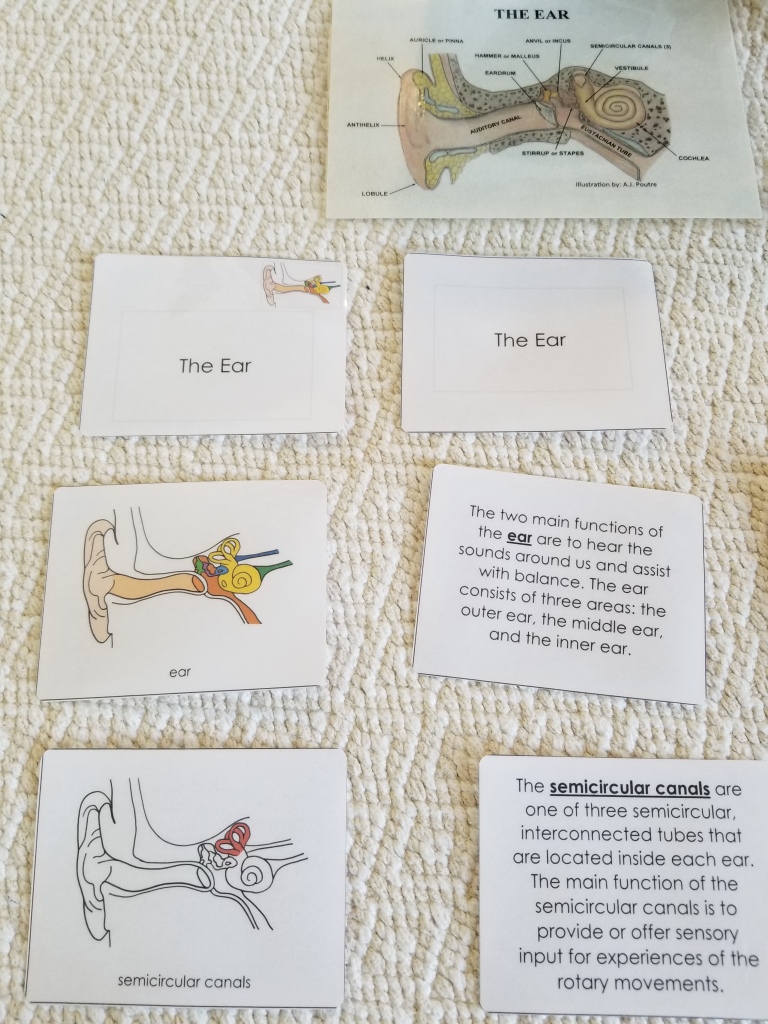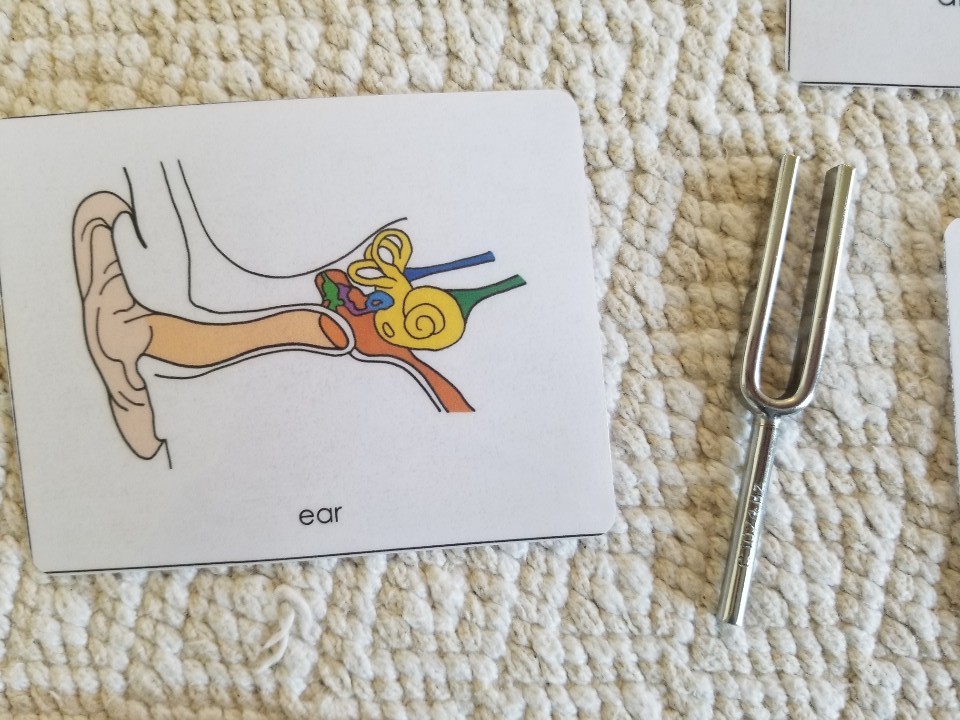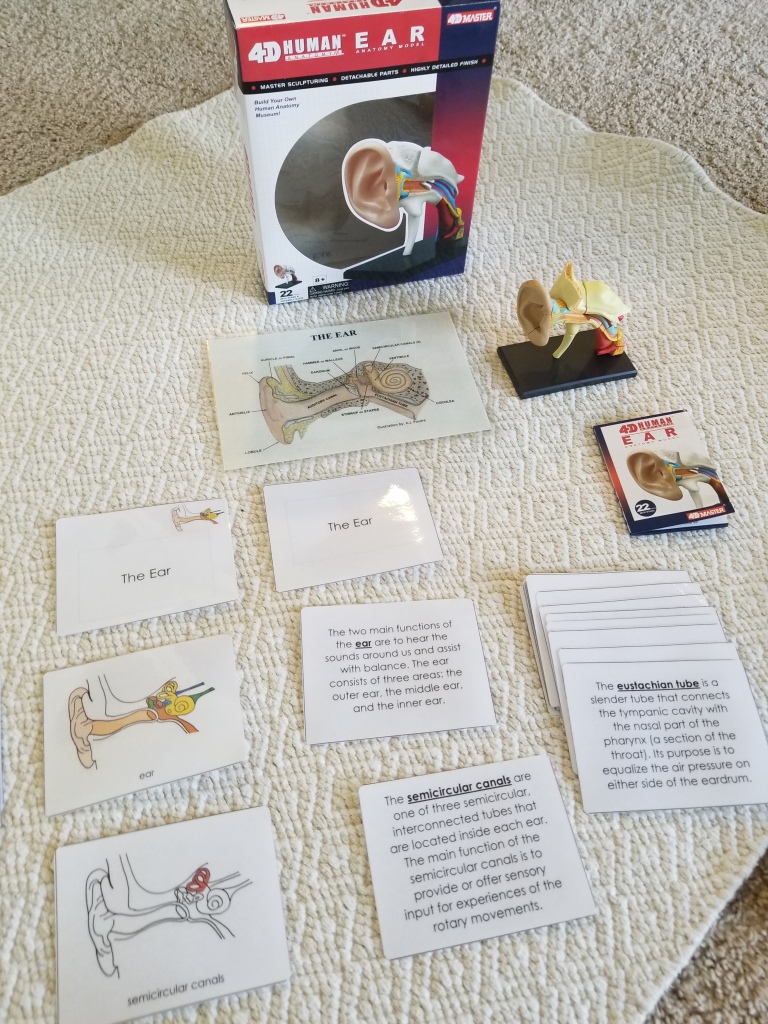Health – 6-10

Have you been noticing an increase of technology involvement in classrooms today? Earbuds, headphones are no exceptions. I’ve always been concerned with children’s fragile organs being overused causing potential irreversible damages. Maybe that’s just me, but what goes through the body, in my opinion, always needs to be carefully assessed. That’s why I think it’s important to raise awareness to health potential issues when learning about the amazing human body.
In this post, I will share the content of our lesson on the parts of the ear and their functions.
The prerequisite would be some prior knowledge on what sound is. For my older learner (9), knowledge on molecules (for neurotransmitters), cilia (from the lungs lesson), and some physics have increased her level of understanding.
The materials we used are the following:
- 4D Human Ear Anatomy
- Montessori Print Shop 3 part cards
- Montessori Print Shop description cards
- A tuning fork
- The Ear chart
- The Magic School Bus Explores the Senses
- An animated video on YouTube (2 min.)
- A free printable project by Ellen Mchenry’s
- A empty paper roller and a ballon

I think opening the topic with a story is always key. In Magic School Bus, we read the 3 page section on Ms. Frizzle traveling through the ear. The children were captivated. We used the Montessori Print Shop cards to associate the adventure with our materials so that they get familiar with the cards for later exploration. We looked at the parts in our 4D model to have a better perspective of where every part looks like in context.
The vocabulary can vary from material to material. You have to decide what you want the children to know. I tend to go for the scientific terms, rather than the popular terms. For example, I taught auditory canal, but they also learned that people may say the ear canal. Just be consistent, and make sure to keep repeating the parts, and reiterate as much as the opportunity presents itself. For example, “so.. the vibrations go from the…, to the…, then now to the…”

As the story went on, the children used the tuning fork to feel and ear vibrations. We also used our cylinder and ballon to demonstrate that vibrations happen when something moves backward and forward in the air.

Using a Tuning Fork
After our story telling, I invited the children to watch a video, which showed a digital version of each part of the ear, from the outer part, to the middle part, to the inner part, in a realistic manner. Some videos can be overwhelming, so one must be very mindful when choosing a quality educational video. It must be short, realistic, age-appropriate, visually as well as linguistically. Too much distraction with obnoxious music and graphics will inevitably distract a young learner.
We ended our lesson with a project. The project helped to consolidate the knowledge since we cut out all the parts and named them. This was more of a fine motor skills lesson than anything!
Finally, I knew the children had gain great interest in the auditory organ. We will be reading articles on the effects of earbuds on children and teens young hearing.



Love it ! Such an intriguing presentation ! I loved the way you tied it all together. The children will be so captivated ! Well Done !
LikeLike
I know they will think twice before using listening devices. They saw a real picture of an eardrum, and that was a marking experience. I hope to tie their human body learning to their self-care learning. 🙂 Thank you for stopping by!
LikeLike